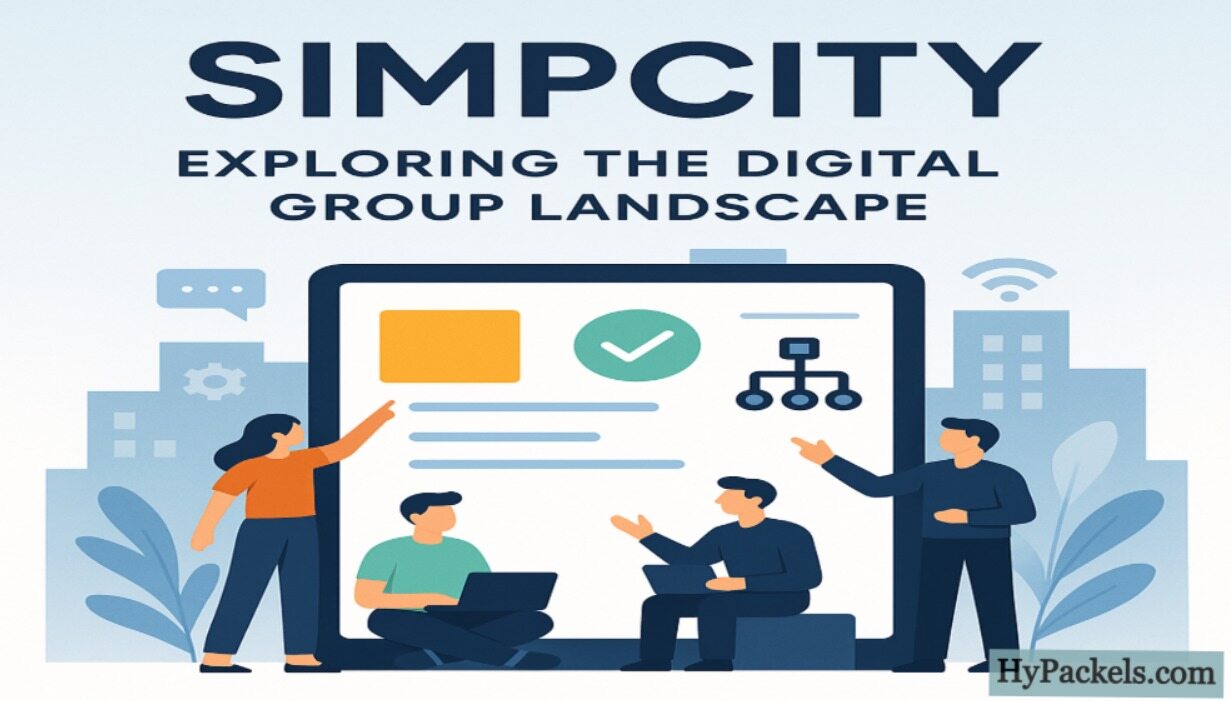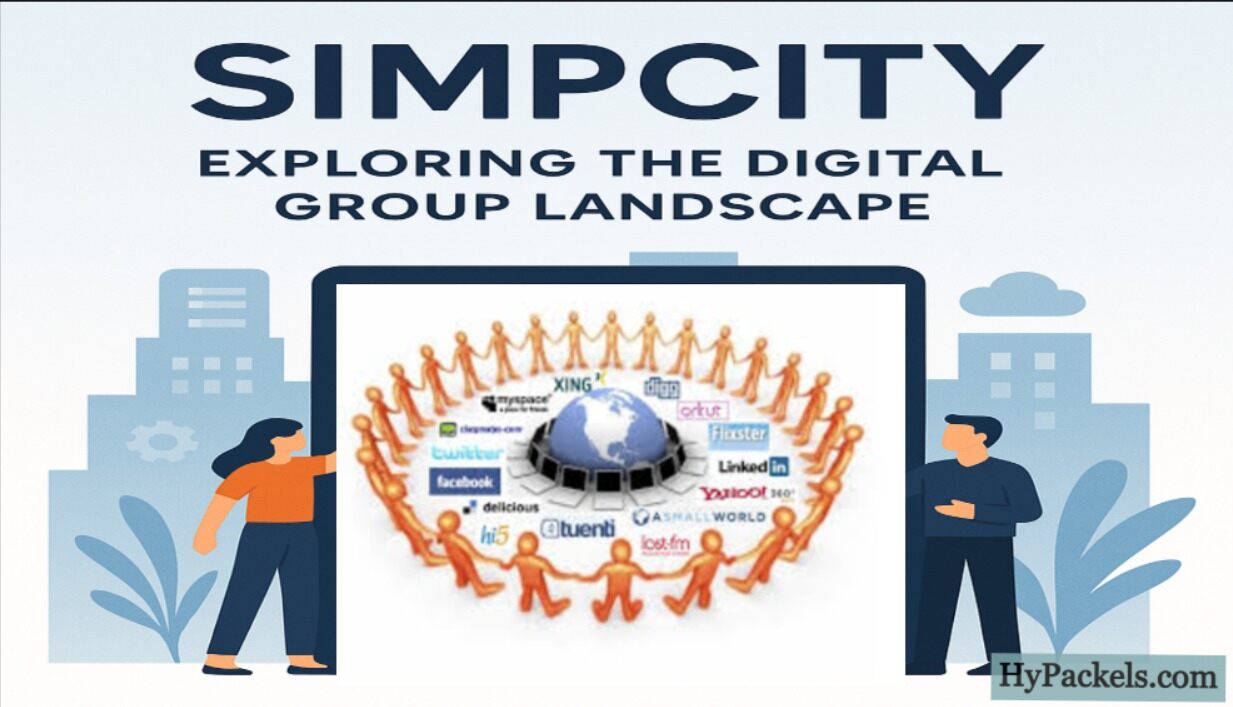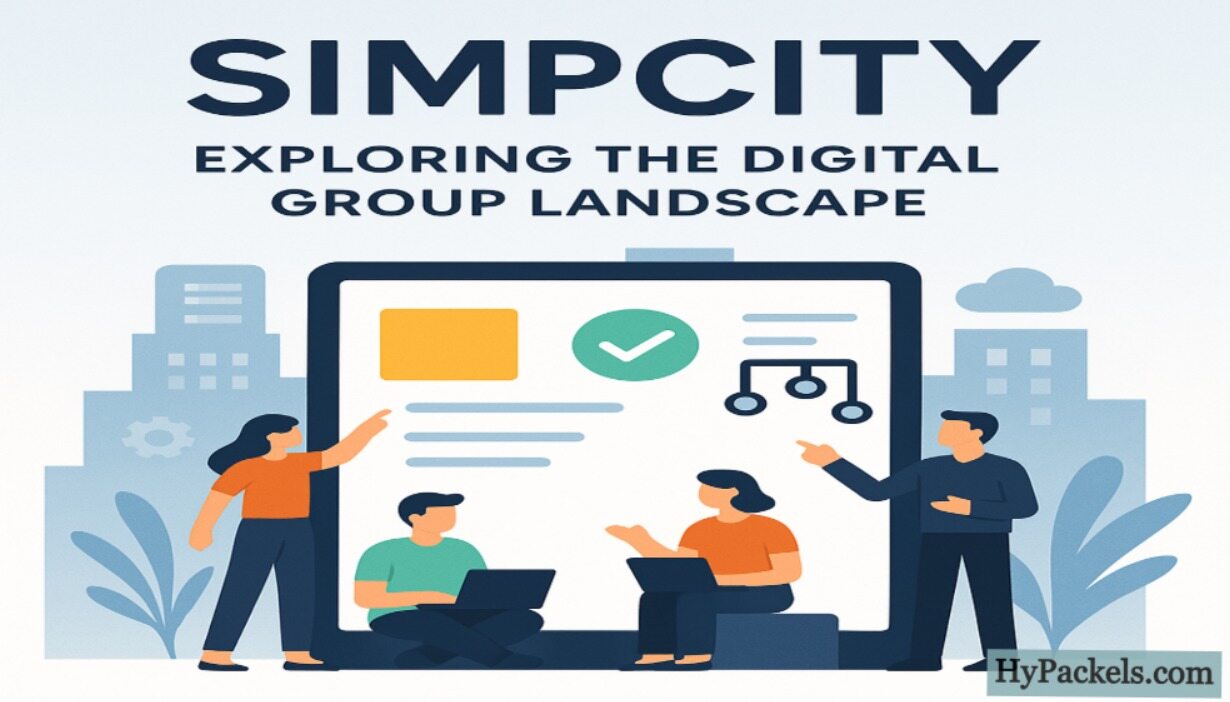Phone:
(701)814-6992
Physical address:
6296 Donnelly Plaza
Ratkeville, Bahamas.

In a fast-paced digital world teeming with complexity, “simplicity” isn’t just a preference—it’s a necessity.
Yet, in the ever-evolving ecosystem of digital groups, platforms, and collaborative communities, achieving simplicity is anything but simple. Enter Simpcity—not just a concept, but a revolution in how we engage, organize, and operate in digital group environments.
Simpcity represents more than minimalistic design or easy navigation—it’s about streamlined collaboration, frictionless communication, and purposeful digital interactions.
This article delves deep into the digital group landscape, guided by the principles of Simplicity, offering a clear roadmap for businesses, communities, and individuals to thrive in the interconnected digital space.

The term digital group landscape refers to the ecosystem of virtual communities, collaboration tools, cloud-based platforms, and communication networks that enable individuals and organizations to interact digitally.
Each of these platforms plays a crucial role in digital group dynamics, but they often suffer from clutter, confusion, and cognitive overload. That’s where Simpcity comes into play.
At its core, Simpcity is rooted in human-centered design and digital decluttering. It champions experiences that are:
To better understand the semantic framework of this topic, here are some latent semantic indexing (LSI) keywords naturally integrated in context:
Digital tools are meant to simplify our lives, but ironically, many platforms overcomplicate them. With notifications flooding inboxes, task lists overflowing, and messages scattered across channels, users often suffer from decision fatigue.
With the rise of remote work, organizations are heavily reliant on digital infrastructure. This makes usability and accessibility critical. A cluttered platform can kill productivity, while a simplified, unified digital environment can boost collaboration across time zones.
Whether it’s an online fan group or a corporate digital team, community management platforms must foster engagement without complexity. Simpcity ensures a balance between robust functionality and ease of use.
| Platform | Simplicity Features | Simpcity Score (out of 10) |
| Notion | Modular workspace, minimalist design | 9 |
| Slack | Intuitive messaging, app integrations | 8 |
| Discord | Easy onboarding, voice & text channels | 7 |
| Trello | Visual task boards, drag-and-drop UI | 8 |
| Microsoft Teams | Centralized tools, simplified chat | 7 |
While flexibility is key, excessive customization can overwhelm users. Focus on clear defaults that work for most users.
Reduce user effort by offering contextual cues and task-focused navigation—guiding users instead of forcing them to explore.
Choose multi-functional platforms that consolidate communication, collaboration, and content—decreasing friction.
With over 60% of internet usage via mobile devices, any digital group platform must be fully responsive and mobile-optimized.

An international nonprofit was struggling with platform overload—using Zoom for meetings, Slack for messaging, Trello for task tracking, and Google Drive for documents.
They migrated to Notion, integrating messaging, document sharing, meeting logs, and task management under one roof. The result?
This shift not only improved efficiency but boosted employee satisfaction and reduced onboarding time for new members.
As AI, machine learning, and automation evolve, the next generation of digital groups will be even more integrated and intelligent. However, the need for simplicity will only grow stronger.
Emerging Trends:
In a world driven by data, screens, and constant connectivity, the ability to create and manage digital groups with simplicity at the core is a competitive advantage.
Simpcity isn’t about doing less—it’s about doing more with less confusion, fewer steps, and better results.
Organizations that embrace Simpcity in their digital infrastructure will enjoy:
The digital group landscape is evolving—make Simpcity your compass.
Simpcity refers to a strategic approach that prioritizes clarity, ease of use, and minimalism in digital platforms and group environments.
By choosing intuitive tools, reducing unnecessary features, centralizing communication, and focusing on user experience.
Improved productivity, reduced cognitive overload, faster onboarding, and smoother communication.
Yes. Through user-centric redesigns, plugin integrations, workflow audits, and training, complexity can be significantly reduced.
Notion, Slack, Trello, Basecamp, and ClickUp are great examples of platforms that prioritize usability and minimalism.